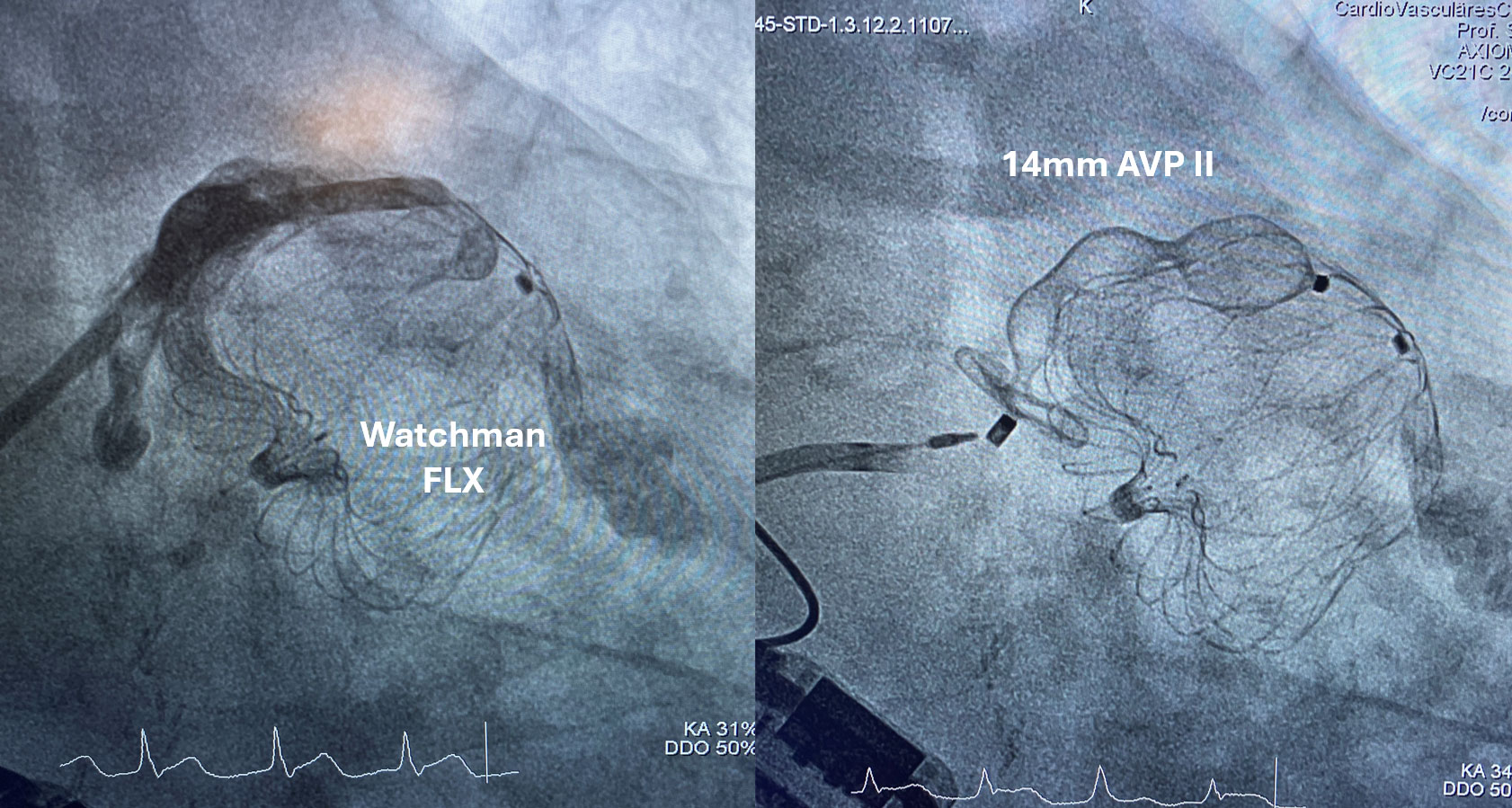Frankfurt, Germany – October 2025
A live educational case from CVC Frankfurt was transmitted to the Transcatheter Cardiovascular Therapeutics (TCT) 2025 congress, illustrating the catheter-based closure of a residual leak after previous left atrial appendage (LAA) occlusion.
The LAA had been closed in December 2024. Follow-up transesophageal echocardiography (TEE) in January 2025 confirmed complete closure, but a subsequent TEE in June 2025 revealed a small residual leak. Such late findings emphasize the importance of structured imaging follow-up after LAA closure.
Residual leaks after LAA occlusion have become a subject of increasing scientific interest. Recent studies suggest that even small leaks may have clinical relevance, although the optimal management strategy remains under discussion.
The concept of percutaneous closure of residual leaks after LAA occlusion originated at CVC Frankfurt, where the first such patient was treated and published more than a decade ago (Wunderlich N, Wilson N, Sievert H. A novel approach to treat residual peridevice leakage after left atrial appendage closure. Catheter Cardiovasc Interv 2013; 82:313-319; DOI 10.1002/ccd.23014).
This year’s live case again highlighted how interventional techniques can address residual flow using modern closure devices such as the Watchman FLX and AVP II, expanding the therapeutic options for selected patients.
 Figure 1: Fluoroscopic view showing catheter positioning during leak closure (Watchman FLX 14 mm and AVP II).
Figure 1: Fluoroscopic view showing catheter positioning during leak closure (Watchman FLX 14 mm and AVP II).
Learn more about our international educational activities through the CSI Congress series (https://www.csi-congress.org), organized under the scientific direction of the CVC Frankfurt team.